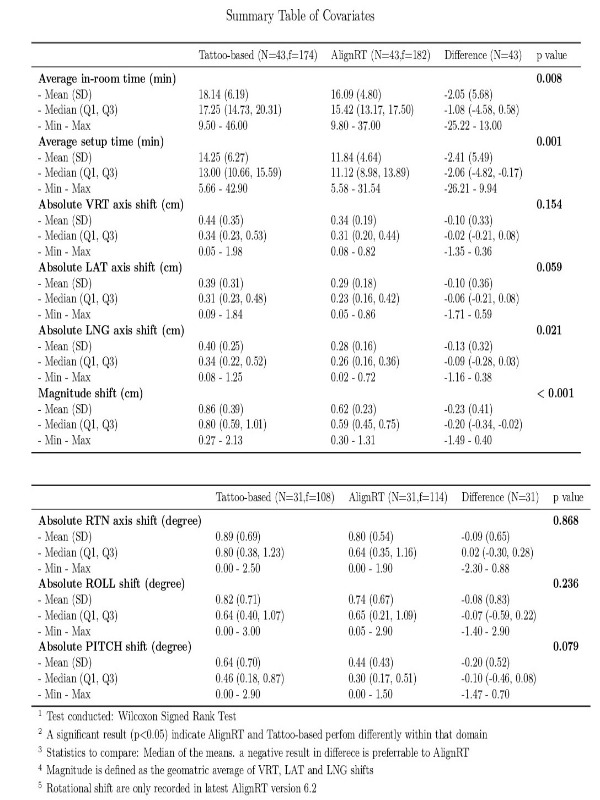A total of 43 APBI patients were analyzed for this
study. For tattoo-less setup via ART, the median absolute TS were 0.31cm vertical
(range: 0.08-0.82), 0.23cm lateral (0.05-0.86), and 0.26cm longitudinal (0.02-0.72).
For TTB setup, the corresponding median TS were 0.34cm (0.05-1.98), 0.31cm (0.09-1.84),
and 0.34cm (0.08-1.25). The median magnitude shifts were 0.59 (0.30-1.31) for
ART and 0.80 (0.27-2.13) for TTB. ART was not statistically distinguishable
from TTB in terms of TS (p=0.154, 0.059, 0.021, respectively) and was superior
to TTB for magnitude shift (p<0.001). Variance testing of each
TS variable also showed an advantage of ART over TTB (p≤0.001, 0.001, 0.005,
respectively).
The median
absolute RS for ART was 0.64° rotation (range:0.00-1.90), 0.65° roll (0.05-2.90),
0.30° pitch (0.00-1.50). The corresponding median RS for TTB were 0.80° (0.00-2.50),
0.64° (0.00-3.00), and 0.46° (0.00-2.90). ART setup was not statistically
different from TTB in terms of RS (p=0.868, 0.236, 0.079, respectively). ART showed
lower variance than TTB in terms of pitch (p=0.009).
The median
total in-room time was 15.42 minutes (range: 9.80-37.00) for ART and 17.25
minutes (9.50-46.00) for TTB (p=0.008). The median setup time was 11.12 minutes
(5.58-31.54) for ART and 13.00 minutes (5.66-42.90) for TTB (p=0.001). Moreover,
ART had a narrower distribution of setup time with fewer lengthy
outliers vs TTB.
